Five miles from downtown Aspen, Colorado, Rick Deane offers sleigh rides and snowmobile tours at his T-Lazy-7 Ranch. One recent Tuesday, with four feet of new snow, a procession of Maseratis made their way up Maroon Creek Road to the ranch, where Deane had packed down a special course by dragging a tiller behind a snow cat. Here, visitors took turns at the wheel of a white 2016 Maserati Ghibli S Q4. Thanks to a twin-turbocharged 3-liter V6 engine making 404 horsepower, the Ghibli can dash from zero to 60mph in 4.7 seconds. But in such deep snow, the exercise was all for giggles.
Besides hosting a few reporters, Maserati’s real mission in Aspen was the consumer-facing Winter Drive Experience, offered for nine days in February. Based at local hotels, it brought cars directly to the beautiful people, a large number of whom happened to be Brazilians, fitting a bit of winter into their summer.
The Italian carmaker is hardly alone in its improbable pursuit of snowy rooster tails: A host of luxury carmakers, including Porsche, Lamborghini, Bentley, Aston Martin, Audi, Mercedes-AMG and, of course, Land Rover, offer similar cold-weather programs in such far-flung locations as Finland, New Zealand and Mongolia.
The Winter Drive Experience represents a change in Maserati’s marketing philosophy, which used to be, “We’re unattainable.” As the brand sold 12,204 cars in the US during 2015, and about 35,000 worldwide, it adopts a familiar ploy among purveyors of luxury, namely, giving customers free thrills. “Much like cruising down the slopes at Snowmass,” reads the press release, “the sheer dynamic pleasure of whipping around a bend on a snowy Aspen road is a unique experience that Maserati is pleased to offer to the everyday driver.”
And this year, the Colorado face time with customers served a very specific purpose: It allowed Maserati to demonstrate the effectiveness of its Q4 all-wheel drive system, added in 2015 to extend the brand’s appeal to places where winter gets serious — which, in a market as geographically varied as the US, could mean thousands of sales each year. The system is calibrated to prevent understeer, so rather than making deliberate telemark turns, these Italians do a snowboarder’s alley-oop. The chassis rotates in response to the throttle, and the tail kicks right out. And there’s no clunking or hesitation while as much as 50 percent of the engine’s torque transfers to the front wheels.
Standing near one of the T-Lazy-7’s weird-looking Hägglund Bv206 terrain crawlers, Rick Deane reflected on his own experience in the Ghibli. “I was really impressed”, he said, comparing the Q4 system to the reaction of other all-wheel drive vehicles. “They’re way slow, and you get stuck. This seems like it was almost instantaneous.”
Did any of the visitors guess their host’s luminous past?
Some 40 years ago, Deane was a professional motorcycle racer. On 4 July 1976, he mounted a 750cc Triumph as one of 34 riders competing in the Pikes Peak International Hill Climb, which is held about 150 miles to the southeast. Making his way through a six-bike pileup at the start, he engaged in a mad battle with David Korth, riding a Harley-Davidson XR-750.
“He had more horsepower, but I could get him in the turns.” By Deane’s recollection, the pair passed and re-passed each other 42 times on the unpaved, 12.42-mile course. Going into the final turn, Korth held the advantage, but a contemporary account said Deane “strong-armed his Triumph back into the lead,” then squeezed out Korth, who crashed harmlessly at the finish.
Snow Days
Six winter driving experiences
Porsche
Lamborghini
Bentley
Aston Martin
Land Rover
Audi
Mercedes-AMG
It was Deane’s second-consecutive Pikes Peak victory. His winning time of 13:12.17 trimmed 40 seconds off the old record. The Triumph is included among hill-climb vehicles at Penrose Heritage Museum, in the nearby city of Colorado Springs.
Motorcycles are lean machines, unlike the Ghibli S Q4, which is nearly 7 feet wide (including mirrors), weighs more than two tons, and had an as-tested price of $95,125. The test cars were gussied up with the availableErmenegildo Zegna interior packages, combining leather-upholstered seats with chevron-weave silk inserts and tone-on-tone stitching. Even the headliner was silk. Come to think of it, the designer cars really belonged on this ranch, where designer Wagyu and Maine-Anjou cattle spend the summers.
(For anyone with an inclination toward ranching in the central Colorado Rockies, the 600-acre Tybar Ranch, located 30 miles away, was listed for just $24.8m.)
The Denver Broncos’ Super Bowl victory was still zest-of-orange fresh when we had arrived here on Monday afternoon. At the bar in Slopeside Lanes, a ski instructor who gave his name as Shannon had a word of caution about whipping around a bend on a snowy Aspen road, especially Route 133 through Crystal River Valley.
“Don’t go into the water,” Shannon said. “Lots of people do.” He had imbibed heavily during the football game, and today’s class of noisy 11-year-old Panamanian girls aggravated his hangover; he could say nothing good about their upbringing by nannies. Meanwhile, the tall Argentine barmaid induced the bartender to crack her back in a harrowing bit of down-home chiropractic that made driving into an icy stream seem appealing.
But Shannon’s warning about black ice in the canyons turned out to be all sound and fury. Tuesday’s sun climbed high, turning slick patches into slush. “Not a problem,” said our Maserati. The instrument-cluster display showed torque transfer of as much as 75/25 between rear and front but never reported the maximum 50/50 split. Whatever was happening inside the transfer case—with its mysterious, multiplate clutch—was invisible.
Like others in Aspen, the Maserati hid its secrets.
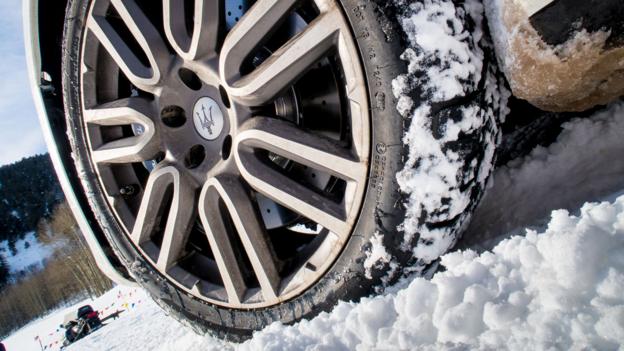
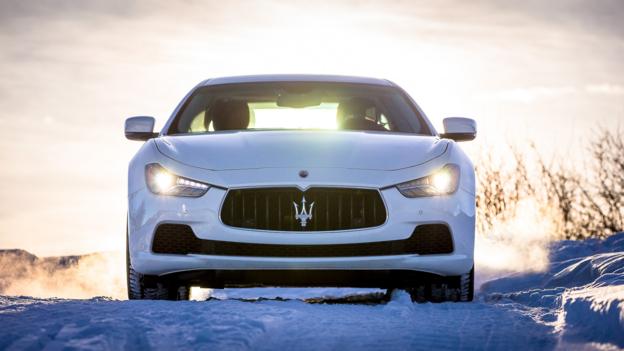
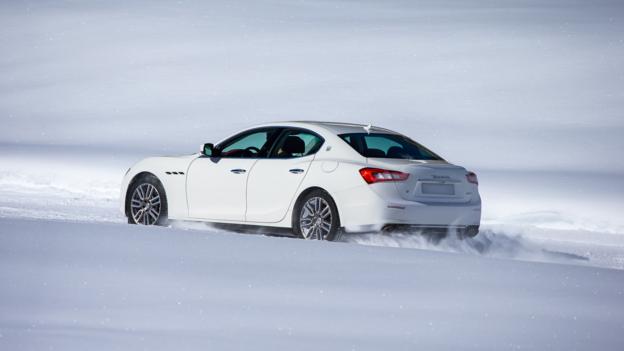
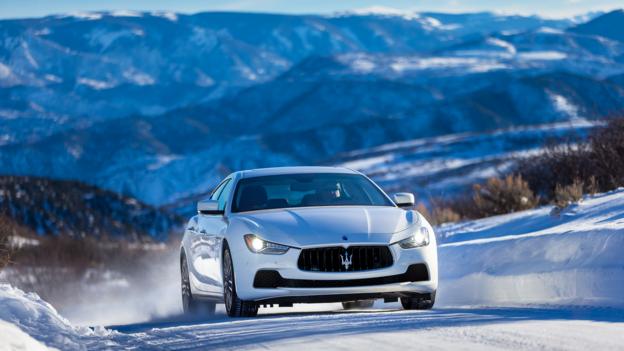
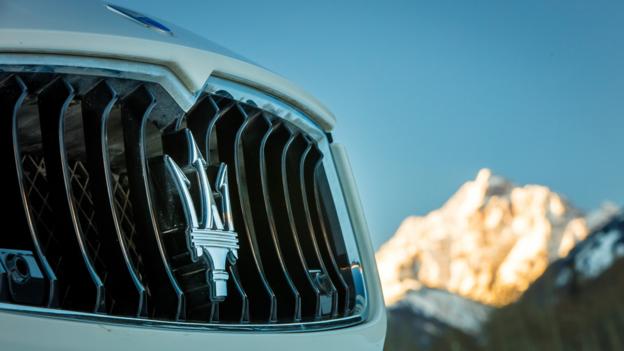
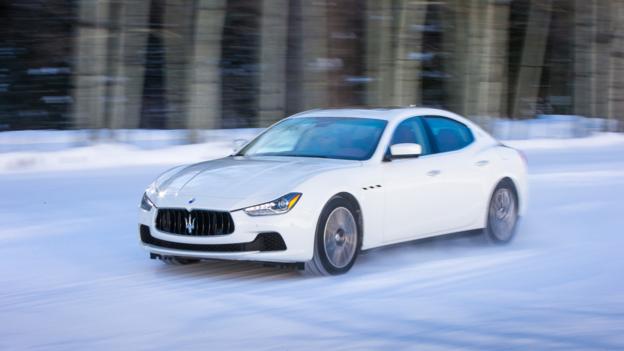
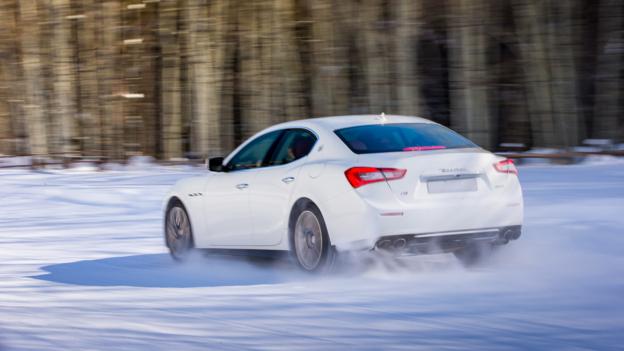
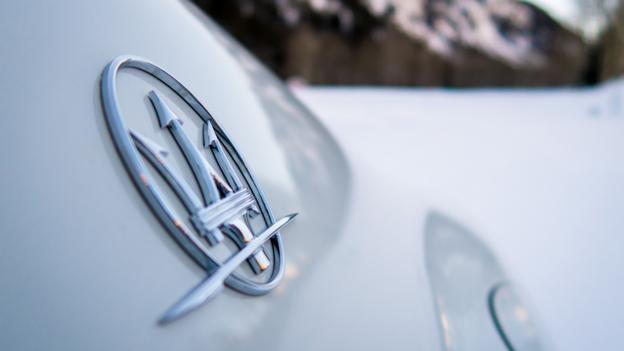
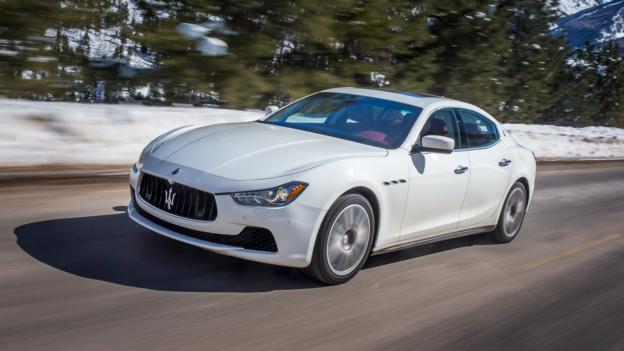
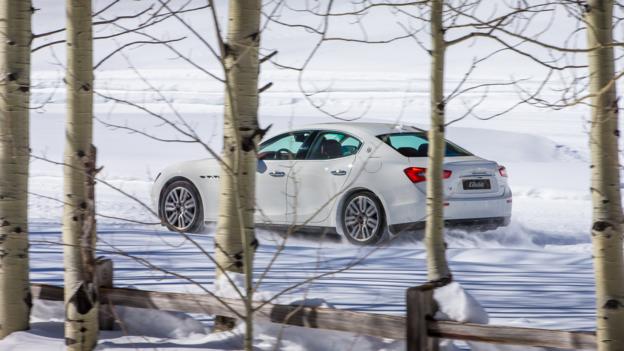
No comments:
Post a Comment